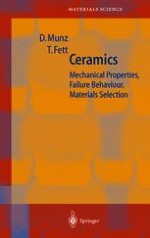Ceramic materials are widely used as components in a great variety of applications. They are attractive due to their good high temperature strength, high wear resistance, good corrosion restistance and other special physical properties. Their major drawback is their brittleness and the large scatter of their mechanical properties. This book describes failure phenomena in ceramic materials under mechanical loading, methods for determining the material properties, and the principles that one should apply when selecting a material. The fracture-mechanical and statistical principles and their use in describing the scatter of strength and lifetime are also covered. Special chapters are devoted to creep behaviour, multiaxial failure criteria and thermal shock behaviour.
